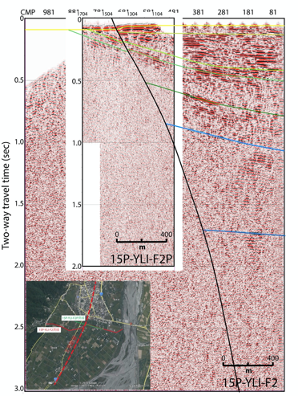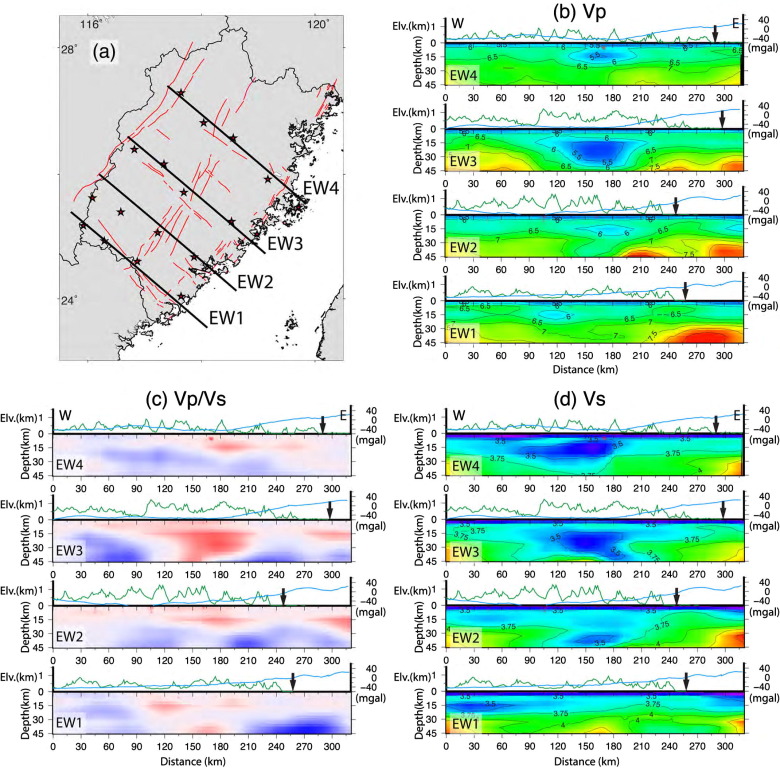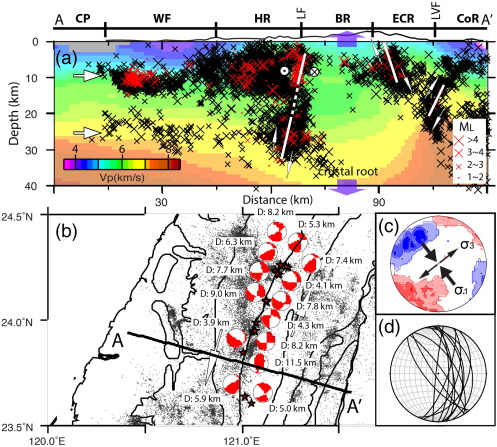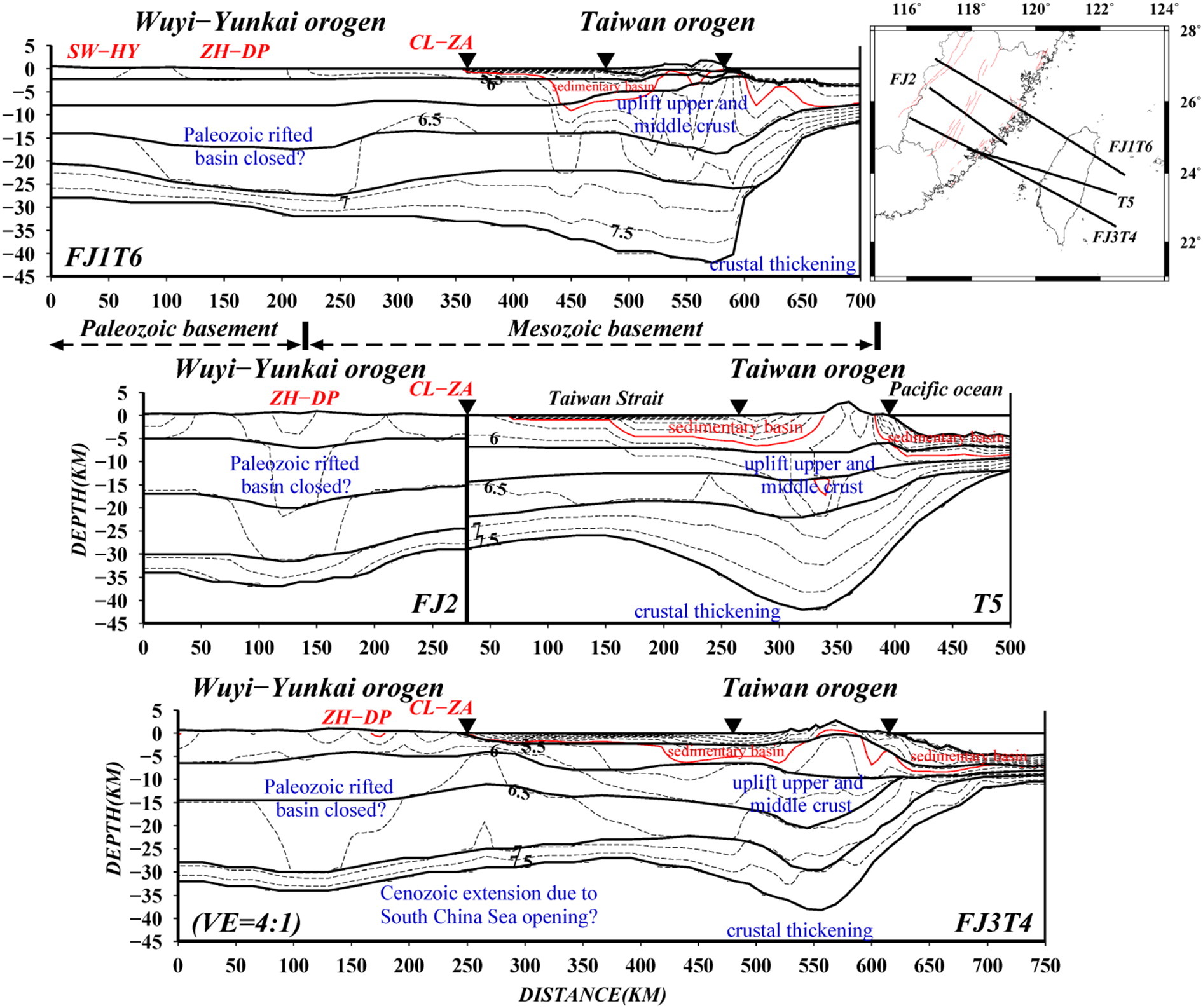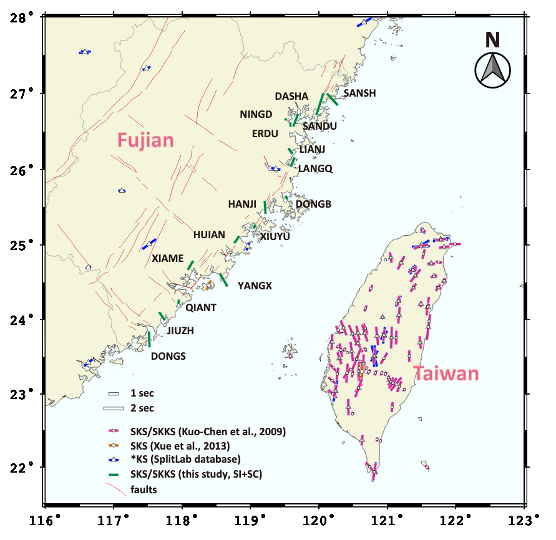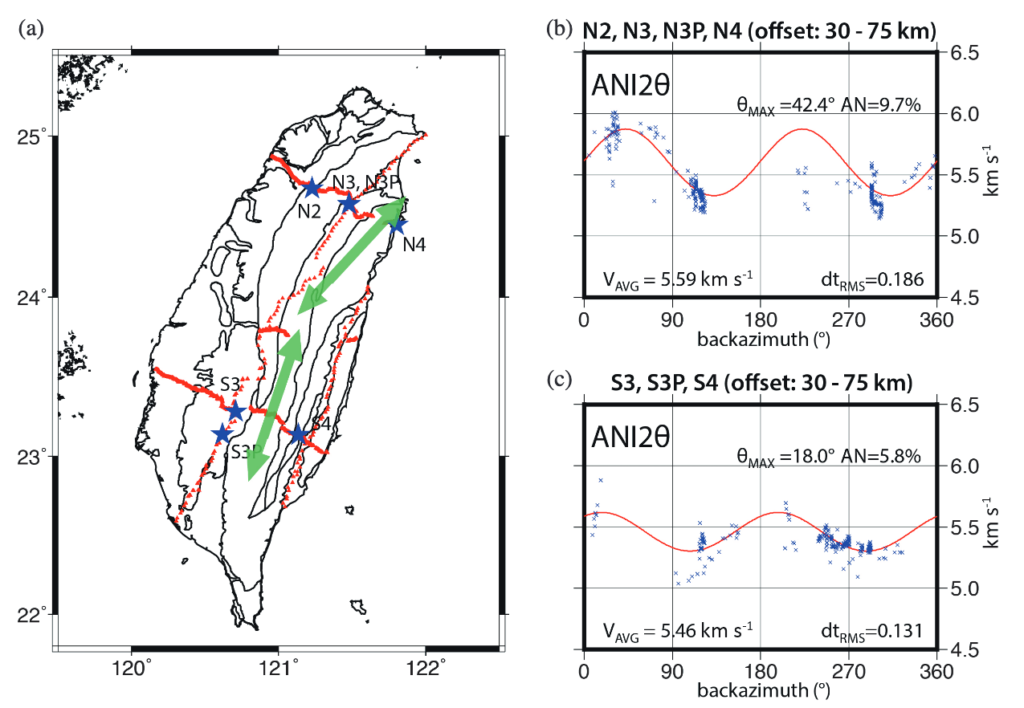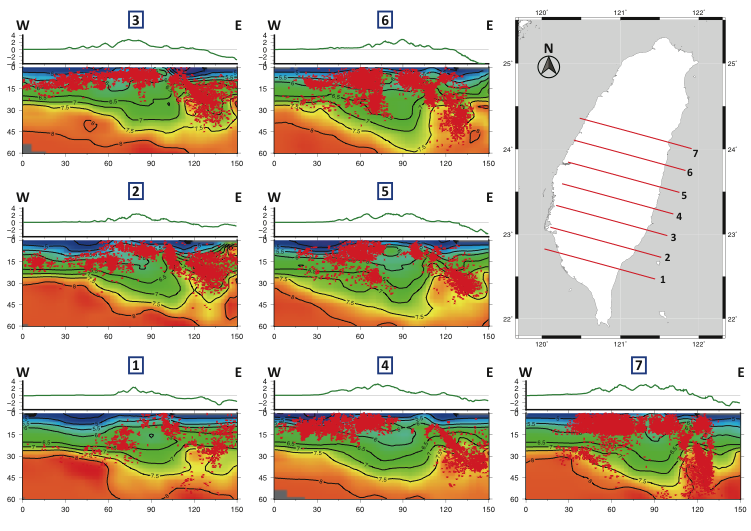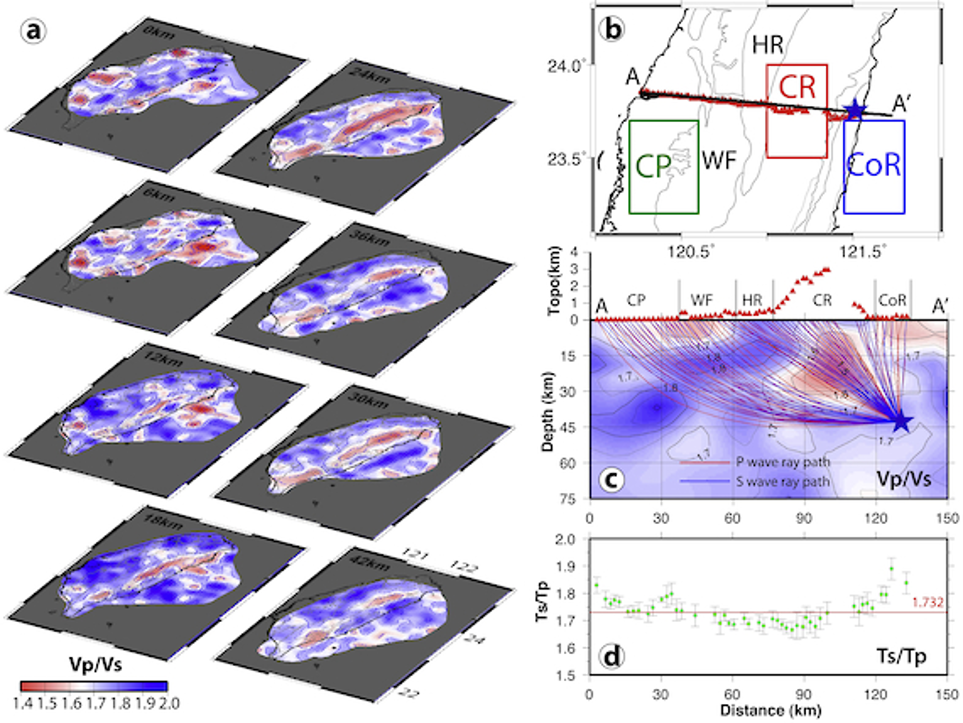Improving the seismic imaging in the southern Ryukyu subduction system by using multiple attenuation methods
- In this study, we test two sets of multiple attenuation methods: differentiate the physical properties and modeling multiples from sea bed and signal.
- We end up using the flow: surface related multiple elimination(SRME), Radon transform, dip-filter and deconvolution.

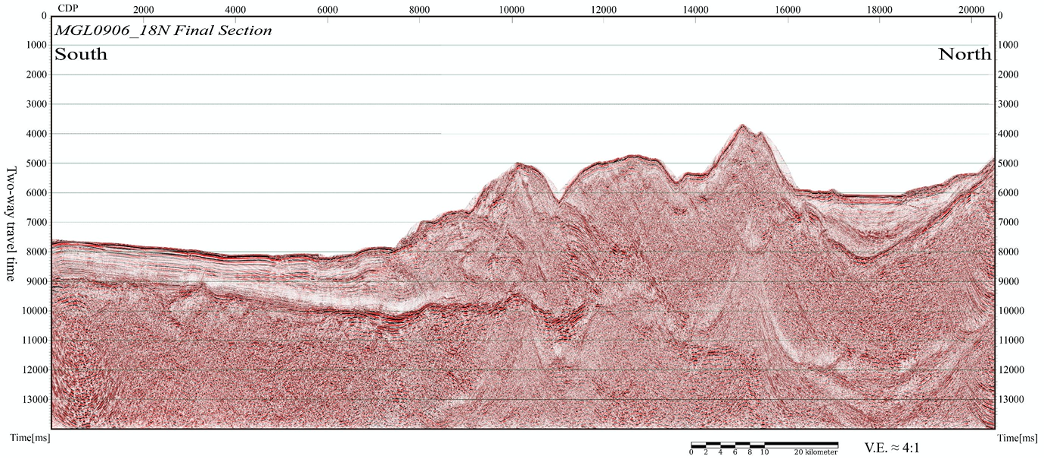
呂奇祝 Ci-Jhu Lyu
碩士論文:利用複反射衰減方法提高海上震測成像並探討南琉球隱沒系統
Master’s Thesis: Improving the seismic imaging in the southern Ryukyu subduction system by using multiple attenuation methods

